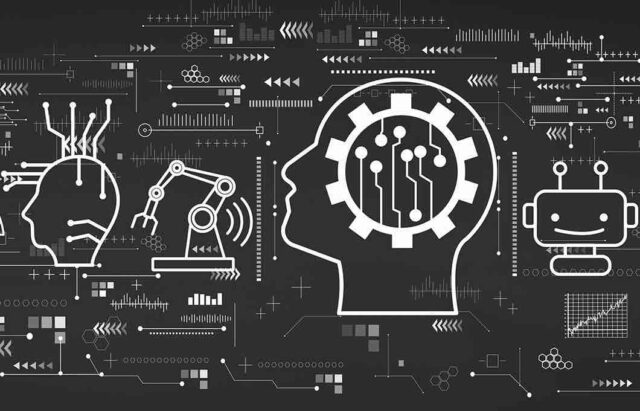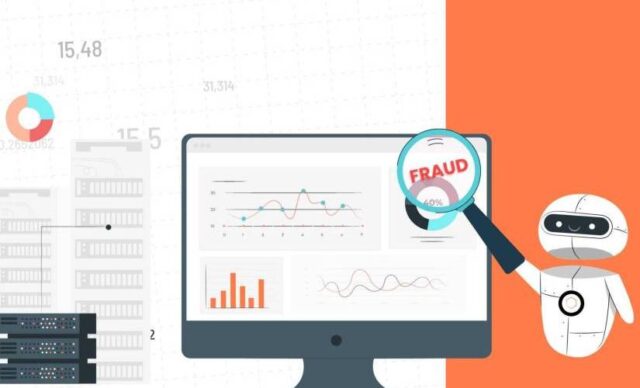
Online frauds are becoming more numerous, sophisticated, imaginative, and inventive. And no business is spared. That’s why companies are using whatever they can lay their hands on to protect themselves and their customers from those scams. Now, they are finding that machine learning is one of the best allies to do that.
Machine learning has proven to be a huge asset in preventing, detecting, and eliminating fraudster attacks thanks to its incredible capabilities.
What is machine learning?

Machine learning is a collection of methods and techniques that develop a computer’s ability to learn from historical data. It belongs to the broader field of artificial intelligence.
Machine learning algorithms build models designed to find patterns or make decisions without specifically being programmed to do so. Using data and acquired knowledge of normal customer behavior, these models decide whether a particular activity is fraudulent or not.
Why is ML important?
Traditional anti-fraud systems are becoming increasingly ineffective. They often require manual double-checking, which can be expensive and time-consuming. In this rules-based approach, algorithms can’t predict fraud outside of the rules established by computer scientists.
Moreover, if you have to make changes to detect new types of fraud, you have to do it manually, either by changing existing algorithms or creating new ones.
ML-based solutions are potential game changers, as the machine acts quickly, learns on its own and gets more effective and precise over time. Also, machine learning can handle the growing volume and variety of data much better than any traditional anti-fraud system.
Deep learning

Deep learning is a subfield of machine learning. It’s based on artificial neural networks, which are extremely complex sets of algorithms. Neural networks mimic the structure of the human brain and the way it learns. Basically, deep learning is a neural network with three or even up to a hundred layers.
Deep learning can process immense amounts of data, moving from one layer to another, while discovering hidden patterns and features. Such power is perfect for fraud detection, as deep learning can analyze complex scenarios and a multitude of factors to identify fraudulent actions.
Benefits of machine learning in fraud detection

For machine learning models, processing and combing through a massive amount of information is a piece of cake. Plus, their self-learning capabilities make them a great asset in the fight against fraudsters. But those are just a couple of benefits of ML applied to fraud detection. Here are other equally important advantages.
Speed
Machine learning can slice and dice huge amounts of data, and evaluate individual activity or behavior as it happens. It constantly analyzes customer behavior. When it notices an anomaly, it can automatically block a fraud attempt, all in real time.
Fewer false positives
A false positive occurs when a legitimate activity appears suspicious. Unfortunately, false positives are very common, so companies spend time and money manually dealing with them. That can change with ML systems and their heightened ability to improve and refine their models over time. The result is greater accuracy and fewer false alarms.
Efficiency
Unlike traditional fraud detection methods, ML deals quite well with unstructured data, such as ID pictures, videos, written reports or insurance claims. Additionally, ML can learn to spot seemingly unrelated patterns that human analysts can easily overlook.
In a sense, ML is like having huge teams of senior analysts with the difference that you have a machine learning system that does all the dirty work around the clock and only requires human intervention in certain situations. All of this results in increased efficiency when dealing with frauds.
Machine learning training approaches

For you to train an algorithm, you need to feed it relevant data that “teaches” the model how to act. The type of data depends on what type of output you want to get.Machine learning can be divided into several categories depending on the need for a trainer, the algorithm architecture, and the overall training approach.
Each approach has its specific strengths and weaknesses, and some techniques are better suited to certain types of problems than others.
Supervised learning
Supervised learning is based on predictive data analysis. In this learning model, it’s necessary to label all input data as good or bad. For example, information on behavior of genuine customers and fraudsters, respectively. Its accuracy depends solely on the provided training set, and how well-organized your data is.
However, here lies its huge drawback! Namely, algorithms trained through supervised learning are able to detect only the types of fraud that were included in the historical data set from which it learned. When the algorithm finds a case that wasn’t included in the training set, it ignores it. This means that the efficiency of algorithms trained like this is defined by the data sets you use to teach it.
Unsupervised learning
This time there’s no labeled data or training set. Algorithms learn to interpret and group data into different clusters based on their similarities (standard patterns of behavior) and differences (unusual patterns that may indicate fraud). The goal is to find hidden patterns or groups in the data.
The system continuously processes and analyzes new data and updates itself according to findings. This is a massive advantage when it’s faced with fraud attempts that it’s never encountered before though it takes a lot of time to train these models.
Semi-supervised learning
Semi-supervised learning is somewhere in the middle between supervised and unsupervised techniques. Actually, it’s a combination of the two. Through this training, the model receives a small amount of labeled data to learn basic partners and operations, and a lot of unlabeled data to train.
Reinforcement learning
It’s used when you want to teach a machine to make decisions that will maximize its positive reward in a given context. This model constantly learns by interpreting its environment through trial and error, because there is no data that holds the key answer.
How do fraud detection algorithms work?

The development of a machine learning fraud detection system can seem challenging but it’s actually quite straightforward. It consists of a handful of steps, including:
Data feed
At the very beginning, every ML system needs data to start. The more data you input into it, the better the model.
Feature extraction
Features describe good or fraudulent customer behavior. Bad behavior is known as a fraud signal.
Features important to fraud detection include, but are not limited to: transaction value, product SKU, credit card type, customer IP and email address, account age, preferred payment methods, average order value, device type, fraud rate of the issuing bank, and many more.
The list of investigated features may vary, depending on the type of fraud that is specific to a particular business.
Training
Now it’s time to train the algorithm. This algorithm is a set of rules that must be followed – something like a recipe. In this phase, the algorithm learns to discern fraudulent and legitimate transactions.
Create a model
Once the algorithm is done training on a given data set, you get the machine learning fraud detection software that fits your business. And the best thing is that it can detect fraud in a flash with a high degree of accuracy (provided that you trained it following best practices).
Real-time fraud prevention
Machine learning is currently the most promising technology for preventing fraud attempts that can cost companies millions of dollars every year.
Its ever-improving models and related cutting-edge technologies can keep you one step ahead in the race against online fraudsters.









